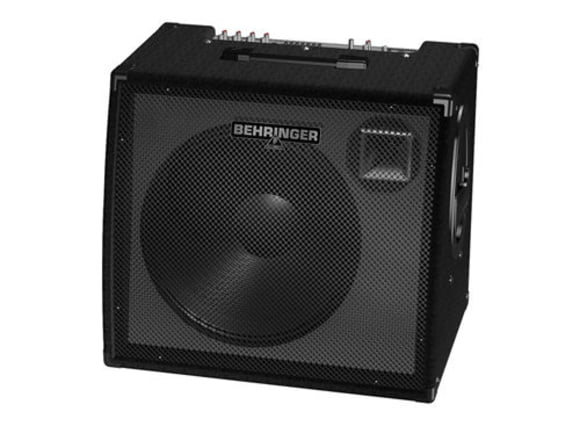2. Speakers
Keyboards, whether a stage piano or analog synthesizer, are able to cover the entire audible frequency spectrum in principle. The demands on a keyboard amp are correspondingly high. Ultra-deep basses should be reproduced just as well as the highest registers in filter sweeps, at least as much as is physically possible. Unlike guitar amplifiers, keyboard amps are only available with transistors and are usually equipped with a two way speaker system. Depending on the size and power they come with 10-15 inch chassis for the bass/mids and a 1’’ horn for the higher frequencies. Theoretically, the larger the mid/bass chassis is, the more bass the amp is able to offer. However, 15’’ speakers are more sluggish than their smaller counterparts due to the larger membrane surface, possibly resulting in less ‘crisp’ midrange production. Therefore some manufacturers offer amps with a 10’’ and 12’’ speaker, a set-up very similar to bass amps. Whenever possible you should test out the amp with the instrument you plan to use it with before buying.

Powerful keyboard amps are often equipped with a 15 "chassis and a 1" horn.
There are two prominent exceptions when it comes to the transistor and two way design: The Roland Jazz Chorus 120 – designed originally as a very clean guitar amp – is equipped with two 12’’ speakers and is a classic e-piano amp. An example of a purely tube amp is the Leslie Cabinet with its rotating loudspeakers. Sound purists often use these to amplify their Hammond organs.


